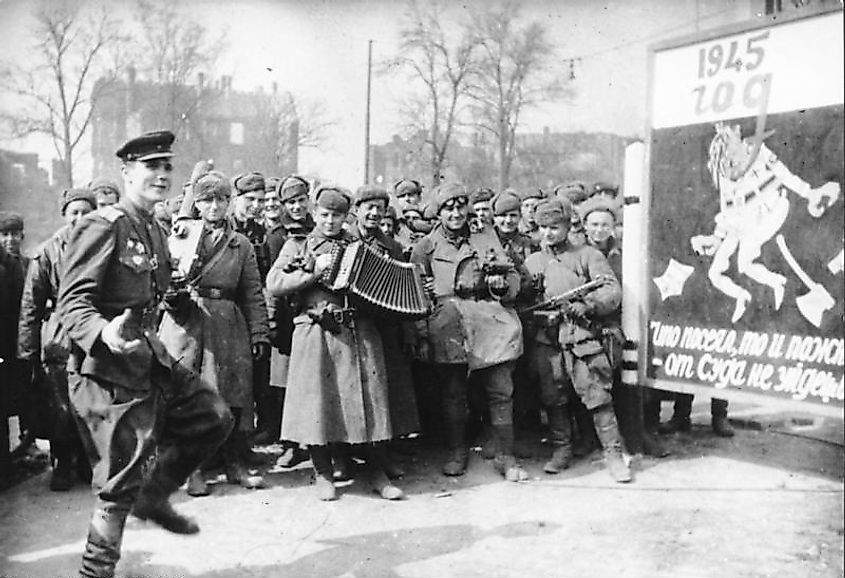
The Battle Of Berlin
The end of World War II marked the culmination of Adolf Hitler's destructive aspirations. With his plans to procure Lebensraum (living space) in the east in shambles, he turned much of his anger towards the German people. Thus, more Germans were killed in the first four months of 1945 than in any other year of the conflict, a death toll that can partially be attributed to Hitler's insistence never to give ground and fight to the last man. Many of these deaths occurred during the Battle of Berlin, the last major military operation of the European war.
Hitler's Failures

The German invasion of the Soviet Union (USSR) in the summer of 1941 saw the beginning of a seemingly endless string of defeats for the Wehrmacht (the German Army). Indeed, while they initially made solid progress, the Germans were eventually beaten back in Moscow and Stalingrad. An attempted counteroffensive in the summer of 1943 also failed, partially due to the Allied invasion of Sicily forcing Hitler to divert troops to Italy. The year 1944 saw the Nazis face even more challenges, with the Allies invading Normandy in June and an attempted assassination of Hitler in July. By March 1945, the Red Army was about 60 miles away from Berlin. By the beginning of April, they were directly outside the city.
The Battle

Beginning their assault on April 16, three Soviet army groups attacked Berlin from the east, west, and north. Many Germans defending the city were members of the Volkssturm, a national militia made up of young boys and old men not already serving in the Wehrmacht. It was created in October 1944 in a last-ditch attempt to win the war. However, while members of the Volkssturm and Hitler Youth did have some minor victories, including the destruction of Soviet tanks, the sheer firepower of the Red Army was overwhelming, meaning that one minor German attack was often followed by heavy artillery bombardment. Thus, on April 20, the 1st Belorussian Front, led by General George Zhukov, began shelling the city center. The entire city was then captured in the next week. By the end of the battle, Berlin was utterly decimated; over 600,000 apartments were destroyed, and about 80 percent of the buildings were damaged. Furthermore, over 80,000 Soviets and 300,000 Berliners were killed.
Hitler's Beliefs And Death

Throughout all of this, Hitler and some of his closest allies were living inside his Führerbunker in central Berlin, having retreated there in mid-January. On March 19, he gave his "Scorched Earth Decree," which ordered the destruction of German infrastructure to prevent the Allies from using it to wipe out the "Aryan race." In reality, he was just prescribing his own motives to his enemies, with his goal being the extermination of Jews and Slavs. This logic was also behind the creation of the Volkssturm, with him reasoning that since "(the enemy's) final goal (was) the extermination of the Germans," it was necessary to fight to the last man. Ultimately, however, this logic of extermination would come to apply to himself and the German people. Indeed, with Berlin in ruins and millions of Germans dead due to their Führer's unwinnable conflict, Adolf Hitler and his new wife, Eva Hitler (previously Eva Braun), killed themselves on April 30, 1945. A week later, Germany surrendered, ending the war in Europe.
In conclusion, the Battle of Berlin was the last major battle in the European theatre of World War II. It resulted in Adolf Hitler's suicide and Germany's surrender. Moreover, it saw the deaths of hundreds of thousands of Germans and the complete decimation of Berlin, both of which were a direct consequence of the Führer annihilatory aspirations. For these reasons, understanding the Battle of Berlin is necessary to comprehend Hitler and the Second World War.











